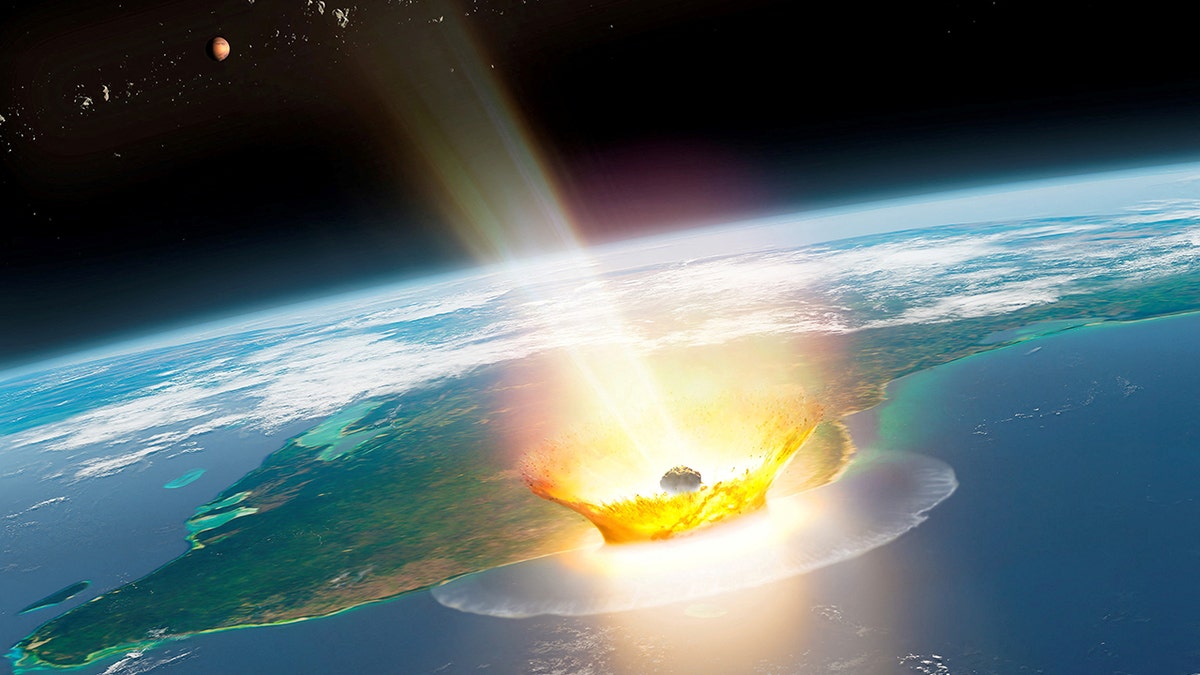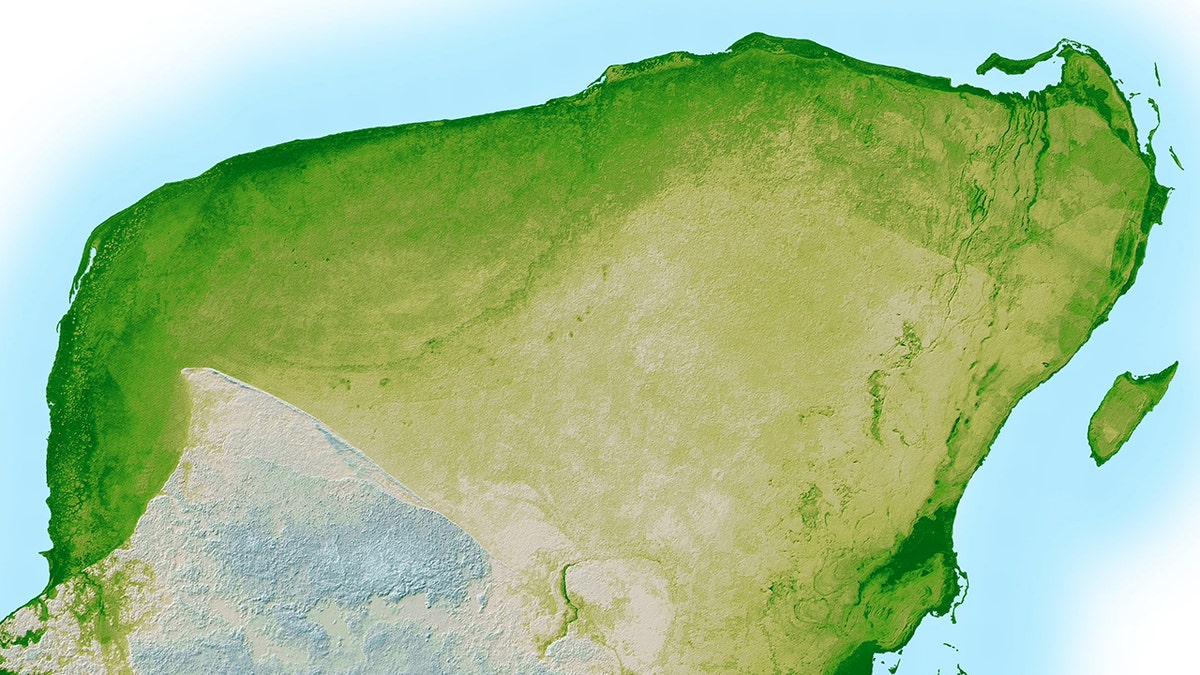
Scientists investigating the asteroid that wiped out dinosaurs after slamming into the Earth 66 million years ago have released a new study suggesting that it formed « beyond the orbit of Jupiter. »
The findings published in Science on Thursday say that the researchers made their determination after examining the geological remains of the impact in modern day Chicxulub, Mexico.
The team, led by Mario Fischer-Gödde of the University of Cologne in Germany, « measured ruthenium isotopes in the impact deposits and compared them with multiple classes of meteorites, which represent potential impactor compositions, » according to a summary of the study.
« They found that the Chicxulub impactor was a carbonaceous asteroid that formed in the outer Solar System, » it continued. « Additional measurements of five other impacts showed that those were due to silicate asteroids that formed in the inner Solar System. »
NEWLY DISCOVERED DINOSAUR SPECIES IS ONLY GREEN FOSSIL EVER GOUND, TO BE DISPLAYED IN LOS ANGELES

Colombian geologists have found samples in South America of the Chicxulub asteroid that triggered a mass extinction on Earth. (Kike Calvo/Universal Images Group via Getty Images)
An abstract of the study also said that the impact of the asteroid at Chicxulub produced « a global stratigraphic layer that marks the boundary between the Cretaceous and Paleogene eras. »
« That layer contains elevated concentrations of platinum-group elements, including ruthenium, » it continued, adding that the scientists’ data indicates the asteroid that struck Mexico had « formed beyond the orbit of Jupiter. »
FLASHBACK: STUDY SAYS ASTEROID THAT KILLED THE DINOSAURS ALSO CAUSED A GLOBAL TSUNAMI

An artist’s impression of a large asteroid impacting at Chicxulub on the Mexican coastline, which caused a mass extinction of dinosaurs 66 million years ago. (Mark Garlick/Reuters)
« So far, Chicxulub… seems to be a unique and rare case of a carbonaceous-type asteroid hitting Earth, » Fischer-Gödde told The New York Times, which reports that previous research has suggested similar findings regarding the asteroid’s true origin.

This NASA handout image is a high resolution topographic map of the Yucatan Peninsula. In the upper left portion of the peninsula, a faint arc of dark green is visible indicating the remnants of the Chicxulub impact crater. (NASA/Getty Images)
CLICK HERE TO GET THE FOX NEWS APP
« Without this impact, what would our Earth look like today? » Fischer-Gödde added. « We should probably value, a bit more, that we are around and this is maybe a lucky coincidence that everything came to place like it is today. »
